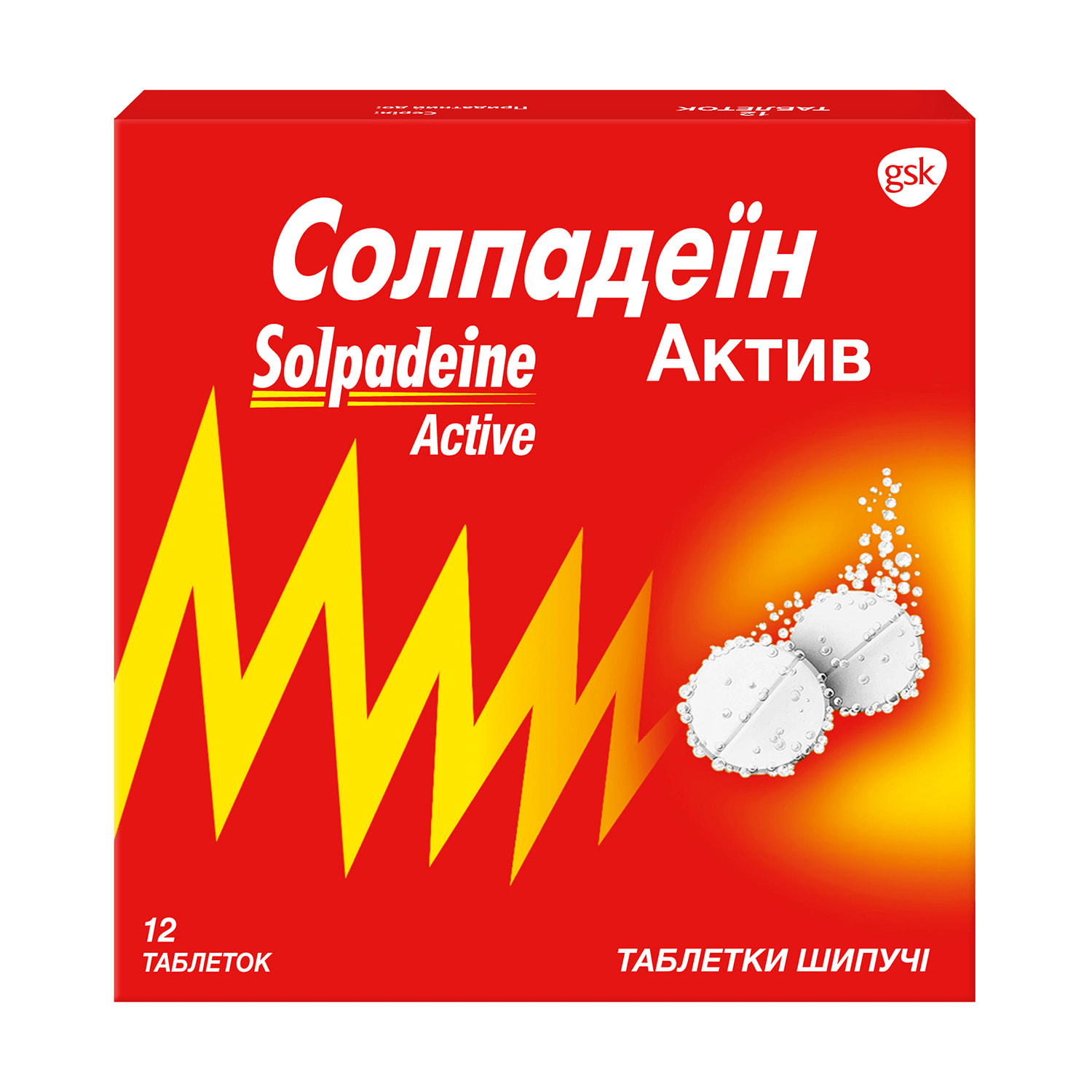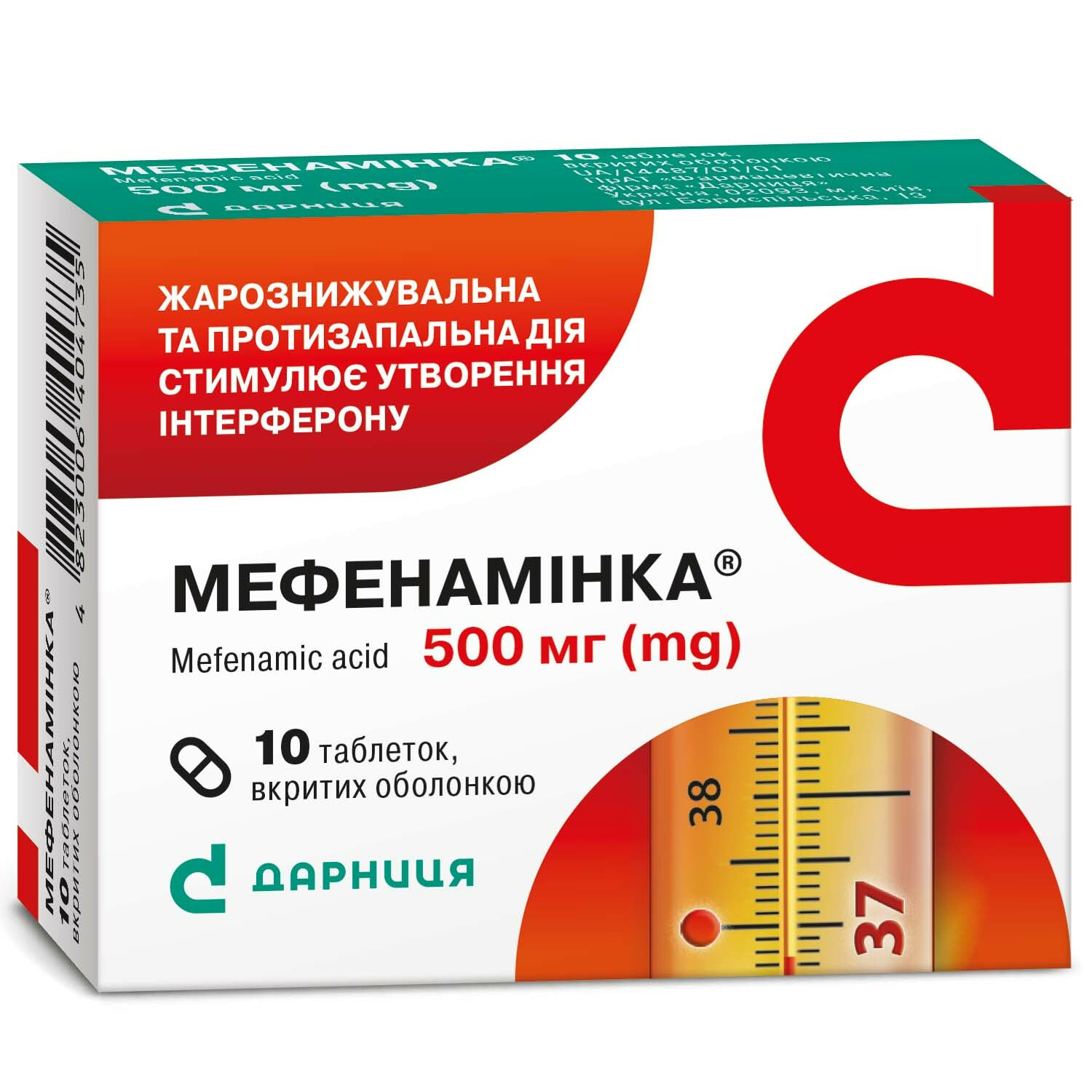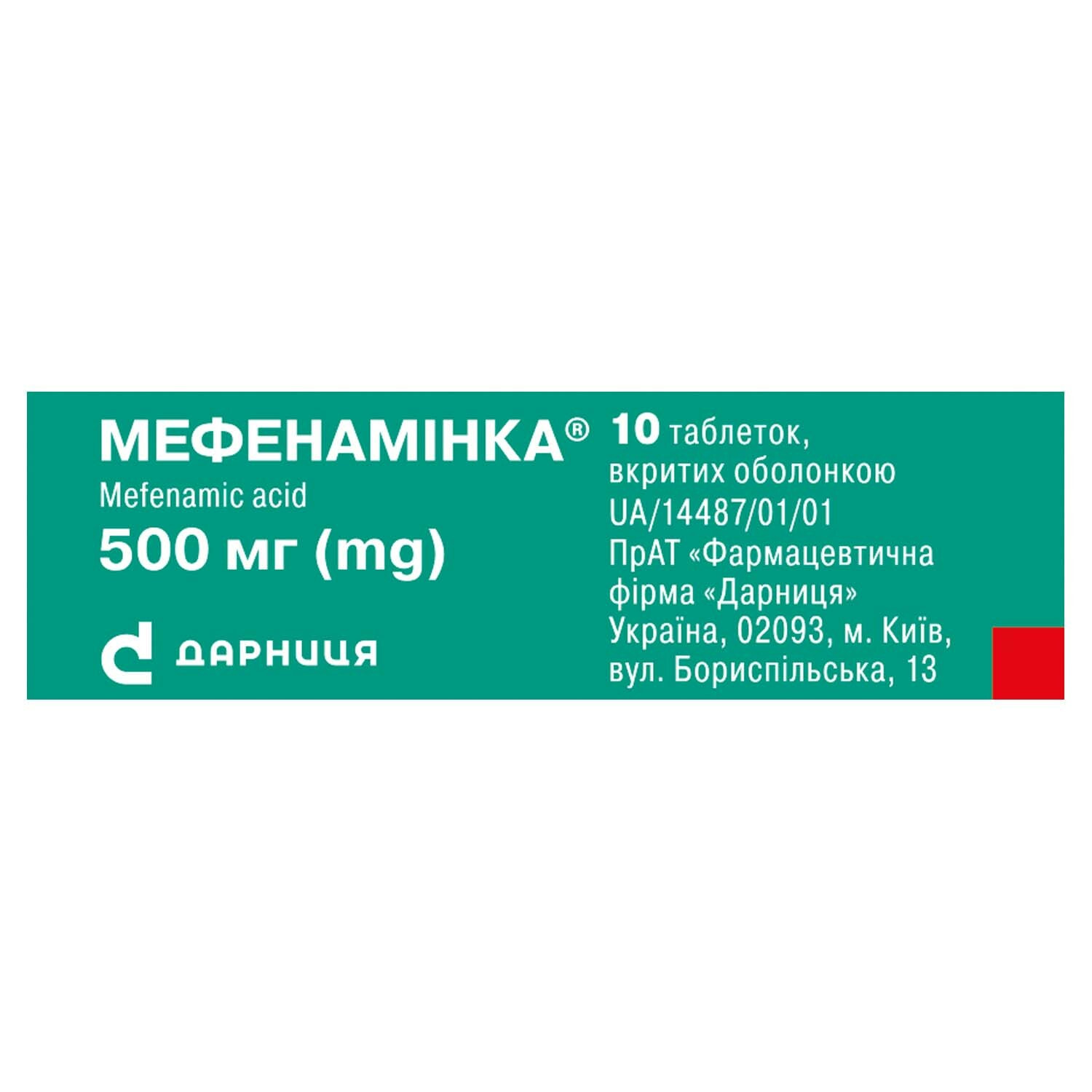- Have any questions?
- +380 (50) 50 73 903
- uapothecary.pharmacy@gmail.com
Tempalgin coated tablets 20 pcs
Original price was: $17.49.$15.89Current price is: $15.89.
Tempalgin Coated Tablets are a fast-acting solution for relieving mild to moderate pain and discomfort. Each tablet contains a combination of analgesic and sedative components that work together to provide effective relief from headaches, dental pain, muscle pain, and other types of pain, while also helping to reduce anxiety and tension often associated with pain.
Pharmacological properties
Pharmacodynamics. sodium metamizole as an analgesic has an analgesic and anti-inflammatory effect. it inhibits the synthesis of prostaglandins by inhibiting cyclooxygenase, has a known membrane-stabilizing effect, and inhibits the formation of endogenous pyrogens.
Tempidone has pronounced anxiolytic activity and eliminates the state of anxiety, fear and tension. Reduces motor excitability, has a central N-cholinolytic effect, enhances and prolongs the analgesic effect of metamizole. Tempidone also has a beneficial effect on the emotional component of pain.
The combination of metamizole sodium and Tempidone enhances the analgesic effect of metamizole and increases the duration of its action.
Pharmacokinetics. Resorption. After oral administration, metamizole is hydrolyzed in the gastrointestinal tract. Active metabolites are 4-methyl-aminoantipyrine (MAA) and 4-aminoantipyrine (AA). MAA is characterized by rapid and complete resorption. C max in blood plasma is reached within 1-2 hours. The bioavailability of MAA is about 90%. Food does not affect the pharmacokinetics of metamizole.
Tempidone is resorbed in the upper parts of the gastrointestinal tract. Therapeutic concentrations in blood plasma are established 30 minutes after administration.
C max in blood plasma of 0.8 μg/ml is reached within 60 minutes.
Distribution. Metamizole sodium partially binds to blood plasma proteins.
Data obtained in experimental studies on animals show that the distribution of Tempidone in tissues is significant.
Metabolism. Metamizole sodium undergoes intensive metabolism in the liver. Its main metabolites – 4-MAA, 4-AA – are pharmacologically active.
Breeding. It is excreted in the urine in the form of metabolites, and only 3% of the allocated amount of metamizole is found unchanged. Metamizole metabolites are excreted in breast milk.
Tempidone is excreted in the urine unchanged, in the amount of ⅔ of the applied dose.
Patients with impaired liver function: T ½ of the active metabolite of MAA in patients with impaired liver function is prolonged approximately 3 times. Metamizole treatment in lower doses is recommended for these patients.
Patients with impaired renal function: in patients with impaired renal function, the degree of excretion of some metabolites is reduced. Metamizole treatment in lower doses is recommended for these patients.
Indication
Short-term symptomatic treatment of pain syndrome, from mild to moderate, in the following conditions: headache, toothache and dental manipulations, muscle pain, neuralgia, arthralgia.
Application
Tablets are taken orally with water, preferably after meals.
The course of treatment should not exceed 3 days. Use of the drug for a longer period or in higher doses is possible only after consultation with a doctor.
The dose depends on the severity of pain and individual sensitivity to the drug.
Adults The usual dose is 1 tablet 1-2 times a day, depending on the severity of clinical symptoms. The maximum single dose should not exceed 1 tablet. The maximum daily dose is 2 tablets.
During dental manipulations – 1 tablet 30 minutes before the intervention.
Children over 15 years old. 1 tablet per day. The maximum daily dose is 1 tablet.
Patients older than 65 years. No dose reduction is usually required. In patients with age-related disorders of kidney and liver function, treatment with the drug should be short-term. The maximum daily dose should not exceed 2 tablets.
Patients with impaired liver function. In such patients, an increase in T ½ of metamizole metabolites is possible. In patients with moderate or severe liver damage, it is recommended to use ½ the recommended dose for adults (maximum daily dose – 1 tablet).
Patients with impaired renal function. Metamizole and its metabolites are excreted by the kidneys. In patients with impaired kidney function, treatment with Tempalgin should be carried out using ½ the recommended dose for adults (maximum daily dose – 1 tablet).
Contraindication
Hypersensitivity to the active or auxiliary substances of the drug; hypersensitivity to other pyrazolone derivatives; acute hepatic porphyria; congenital deficiency of glucose-6-phosphate dehydrogenase (threat of hemolysis); severe diseases of the kidneys and / or liver; bone marrow dysfunction (for example, after treatment with cytostatics); diseases of the blood system (aplastic anemia, leukopenia and agranulocytosis), changes in the composition of peripheral blood; anemia of any etiology, cytostatic or infectious neutropenia; arterial hypotension with hell values of 100 mm Hg. art.; suspicion of acute surgical pathology.
Side effects
When using the drug Tempalgin, possible side effects are more often caused by metamizole sodium.
Adverse reactions are classified by organs and systems.
From the blood and lymphatic system: agranulocytosis, leukopenia, aplastic anemia, thrombocytopenia, hemolytic anemia. The risk of developing agranulocytosis cannot be predicted. Agranulocytosis can also occur in patients who used metamizole in the past without side effects. The risk of agranulocytosis increases with long-term use (1 week) of metamizole.
From the side of the immune system: fixed drug rash, maculopapular rash, anaphylactic or anaphylactoid reactions. Milder actions are manifested by typical reactions from the skin and mucous membranes – itching, burning, redness, urticaria, edema (generalized or local), dyspnea, and rarely – disturbances from the gastrointestinal tract. Such mild reactions can turn into more severe forms with generalized urticaria, severe edema (including laryngeal), severe bronchospasm, heart rhythm disturbances, a decrease in blood pressure (sometimes with a previous increase in blood pressure), an asthmatic attack (in patients with aspirin asthma), a syndrome Stevens – Johnson and Lyell, circulatory shock.
From the side of metabolism and nutrition: decreased appetite.
From the side of the nervous system: headache, dizziness.
From the side of the cardiovascular system: increased heartbeat, tachycardia, cyanosis, arterial hypotension.
Gastrointestinal tract: nausea, vomiting, pain and discomfort in the abdomen; in isolated cases – ulceration and bleeding.
From the side of the hepatobiliary system: increase in the level of liver enzymes (AST, ALT), cholestasis, hyperbilirubinemia.
From the kidneys and urinary tract: polyuria, oliguria, anuria, proteinuria, interstitial nephritis. With the use of the drug in high doses – impaired kidney function.
Special instructions
Treatment with the drug Tempalgin (due to the content of metamizole) is carried out only for a short period, when there is no alternative method of therapy.
Before starting treatment, patients should be warned that in the event of bleeding from the gums, paleness of the skin, asthenia, rashes on the skin and mucous membranes, the drug should be stopped and the doctor should be consulted immediately.
With longer-term treatment with Tempalgin, it is necessary to monitor the blood picture, including the leukocyte formula, due to the increased risk of agranulocytosis.
Do not exceed the recommended doses of the drug. Since metamizole has anti-inflammatory and analgesic properties, it can mask signs of infection, symptoms of non-infectious diseases and complications with pain syndrome, which can complicate their diagnosis.
In children, it should be used under the constant supervision of a doctor. It is necessary to control the qualitative and quantitative composition of peripheral blood.
It should be used with caution in patients with allergic diseases, increased sensitivity to analgesics and antirheumatic drugs (intolerance to analgesics) and other drugs or food products due to an increased risk of developing allergic reactions and asthmatic attacks.
It should be used with caution in patients of the following categories: elderly – may lead to an increase in the frequency of adverse reactions, especially from the side of the digestive tract; with impaired kidney function, with a history of kidney diseases (pyelonephritis, glomerulonephritis); with inflammatory bowel diseases, including non-specific ulcerative colitis and Crohn’s disease; with cardiovascular insufficiency; with chronic alcoholism.
Metamizole can provoke hypotensive reactions. Treatment with the drug Tempalgin should be carried out with special care in patients with arterial hypotension, volume deficit or dehydration, unstable blood circulation.
With simultaneous use with alcohol, the risk of developing side effects increases.
It should be used with caution in patients with moderate liver function disorders or kidney function disorders.
When taking the drug, the urine may turn red due to the excretion of the metamizole sodium metabolite.
Do not use the drug longer than the prescribed period without consulting a doctor!
If the symptoms of the disease do not begin to disappear or, on the contrary, the state of health worsens, or undesirable phenomena appear, it is necessary to stop taking the drug and consult a doctor about further use.
The wheat starch included in the preparation may contain only traces of gluten and is considered safe for people with celiac disease.
Do not exceed the recommended doses of the drug.
It should be used in children under the constant supervision of a doctor.
Use during pregnancy and breastfeeding
Pregnancy. No controlled clinical studies have been conducted in pregnant women and there are no observational data on the use of the drug in this group. Despite the fact that metamizole is a weak inhibitor of prostaglandin synthesis, there is a possibility of premature closure of the Botallian duct and perinatal complications as a result of a decrease in platelet aggregation in the fetus and mother. Treatment with the drug is contraindicated for pregnant women.
Breast feeding. Metamizole metabolites pass into breast milk. If treatment with Tempalgin is necessary, breastfeeding should be stopped.
Children. Do not use in children under 15 years of age.
The ability to influence the speed of reaction when driving a motor vehicle or working with other mechanisms. Tempalgin reduces the ability to concentrate and slow down conditioned reflexes, so it should not be prescribed to drivers of vehicles and persons whose work requires high speed of mental and physical reactions.
Interactions
The effect of tricyclic antidepressants (imipramine, amitriptyline), oral contraceptives, analgesics, allopurinol and alcohol is potentiated when used simultaneously with Tempalgin.
Simultaneous use with other analgesics and NSAIDs increases the risk of developing hypersensitivity and other side effects.
Barbiturates, glutethimide and phenylbutazone reduce the severity and duration of the pharmacodynamic effects of metamizol due to the induction of liver enzymes.
Metamizole reduces the activity of coumarin anticoagulants with simultaneous use as a result of the induction of liver enzymes.
The analgesic effect of the drug is enhanced by sedatives and tranquilizers (diazepam, combined drugs containing phenobarbital, ethyl bromisovalerianate, codeine, etc.).
Metamizole reduces the concentration of cyclosporine in blood plasma.
With simultaneous use with chlorpromazine, hypothermia may occur.
Cytostatics (sacrolysine, methotrexate), gold preparations, thiamazole, chloramphenicol and other drugs that inhibit hematopoiesis increase the myelotoxic effect of metamizole.
Caution is necessary when used simultaneously with diuretics (furosemide).
Radiopaque drugs, colloidal blood substitutes and penicillin should not be used during treatment with metamizole sodium.
Tempidone potentiates the sedative effect of sleeping pills, general anesthetics, narcotic and non-narcotic analgesics.
When used simultaneously with nonsteroidal anti-inflammatory drugs, including metamizole sodium, the hypoglycemic effect of sulfonamide hypoglycemic drugs increases.
Overdose
Symptoms: gastrointestinal syndrome (nausea, vomiting, stomach pain, at high doses – hematemesis and melena); cerebral syndrome (Meniere-like phenomena, tinnitus, weakness, ataxia, drowsiness, apnea, impaired consciousness, delirium, coma with hypotension and tonic-clonic seizures); hematological syndrome (agranulocytosis, aplastic or hemolytic anemia, hemorrhagic diathesis); metabolic syndrome (metabolic alkalosis); kidney (renal) syndrome (from oliguria to anuria); acute liver failure and OPN; toxic-allergic syndrome (bullous-urticarial and petechial, sometimes measles- or typhoid-like rash; some patients may develop toxic-allergic shock); hypothermia, a feeling of palpitations, a marked decrease in heart rate, tachycardia, dysphagia, shortness of breath, pain in the stomach / gastritis, paralysis of the respiratory muscles.
At the first symptoms of overdose, it is necessary to immediately seek medical help!
Treatment: symptomatic therapy – gastric lavage, monitoring of respiratory and cardiovascular systems, fluid administration, forced diuresis, if necessary – hemodialysis.
Storage conditions
In the original packaging at a temperature not higher than 25 °C.






Reviews
There are no reviews yet.